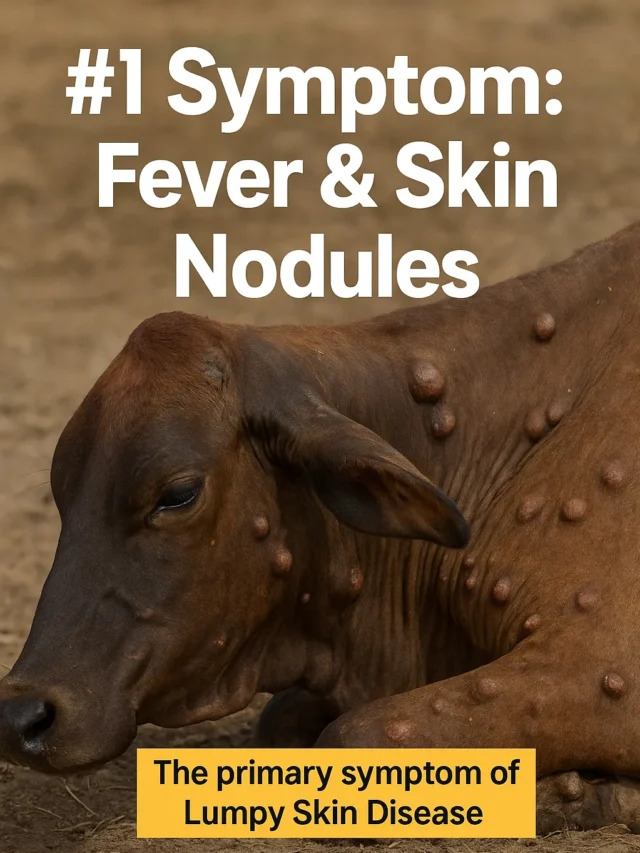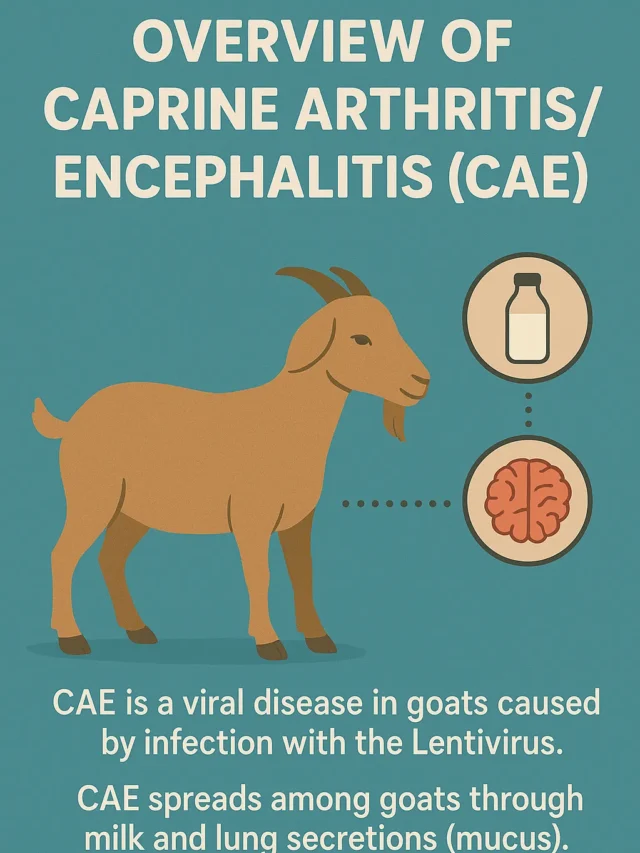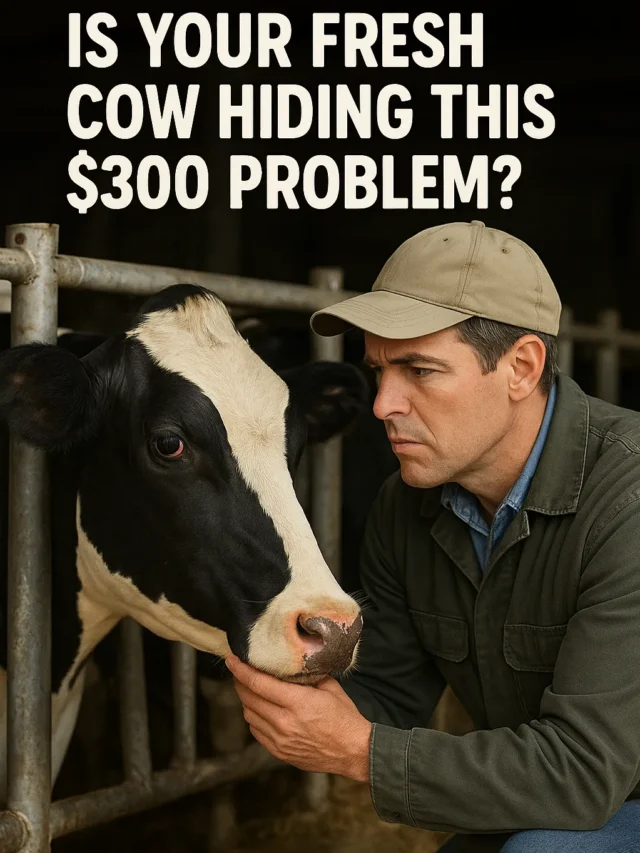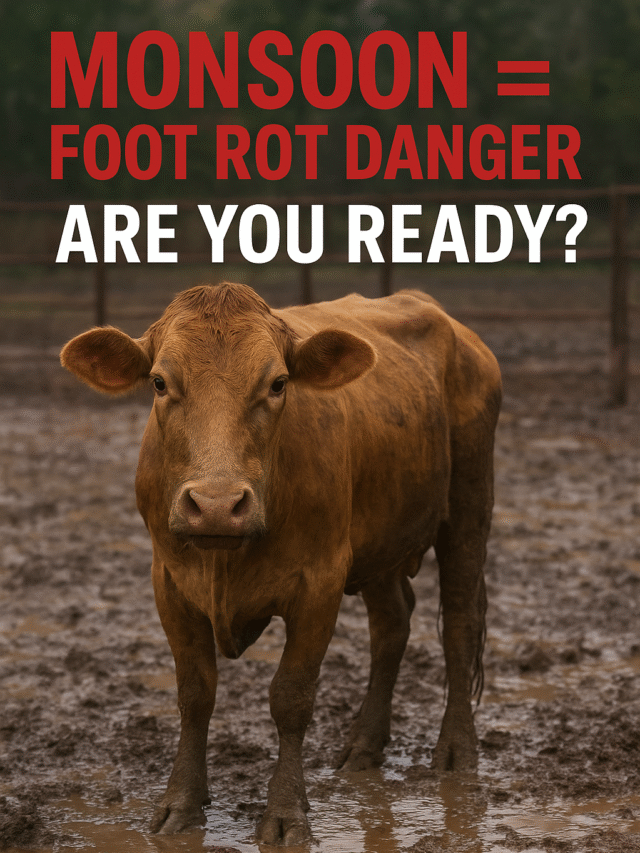Metabolic Disease in Animals: Definition, Types, and Key Characteristics
Definition:
Metabolic Diseases are those diseases which occur due to deficiency, imbalance of nutrients, or disturbance of metabolism in the body. These diseases are especially related to milk production, pregnancy, and the energy requirements of the body.
Metabolic Diseases in Dairy Cattle
| Definition | Disorders arising from nutrient deficiencies, imbalances, or metabolic disturbances, particularly affecting milk production, pregnancy, and energy metabolism in dairy cattle and buffaloes. |
|---|---|
| Main Features |
|
| Breed & Calving Susceptibility |
|
| Major Metabolic Diseases |
|
| Body Condition Scoring (BCS) |
|
| Management & Prevention |
|
| Key Points |
|
| Sources: The Rajasthan Express; ICAR-NDRI Research; University Extension Services (Cornell, Iowa State); FAO Livestock Health Guidelines | |
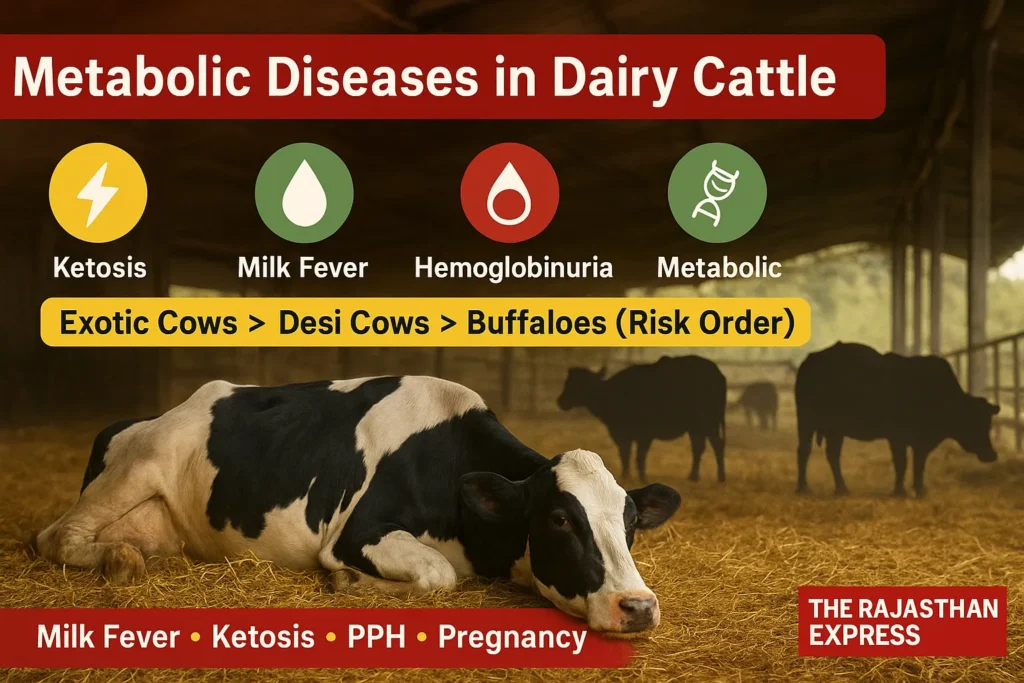
Main Features of Metabolic Disease in Dairy Cattle
- These diseases are Non-Contagious — do not spread from one animal to another.
- In most cases, these diseases are related to the production system, hence they are also called Production Diseases.
- Especially pregnant and milk-producing animals (like cow and buffalo) are more susceptible to these diseases.
- The possibility of metabolic diseases increases with increasing milk production.
- In native cows (Zebu cattle), the highest possibility of metabolic disease is found in the third calving.
- In exotic cows (Exotic Cattle), this possibility is highest in the fifth calving.
- In buffaloes, the possibility of metabolic diseases is mostly in the fourth calving.
- The order of possibility of metabolic diseases is as follows:
Exotic Cow > Native Cow > Buffalo - The possibility of Downer Cow Syndrome, Ketosis, Postpartum Haemoglobinuria, and Mastitis disease is higher in exotic cows, especially in the Holstein-Friesian breed.
- These same diseases are found mostly in the Sahiwal breed in native cows.
- The possibility of Milk Fever is highest in Jersey cows.
Read More About : Mastitis Disease in Cattle
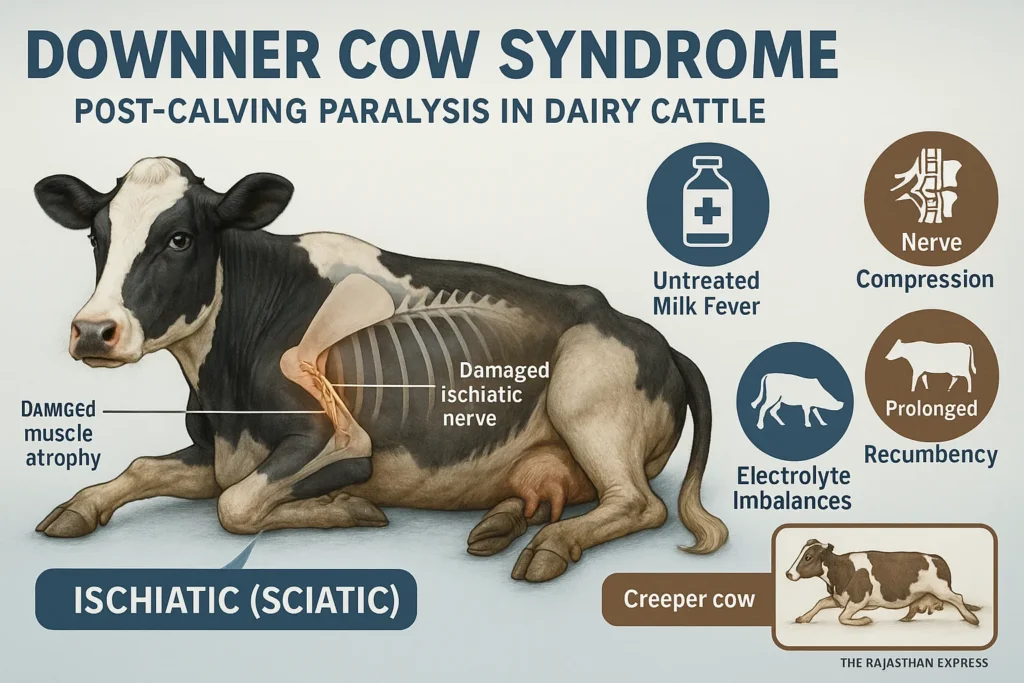
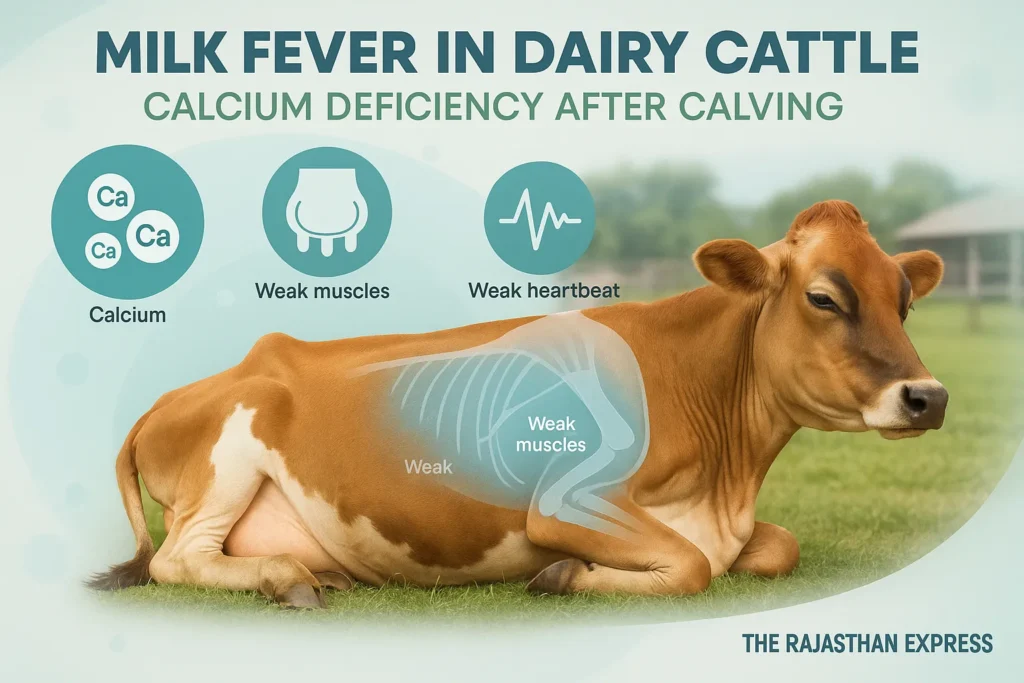
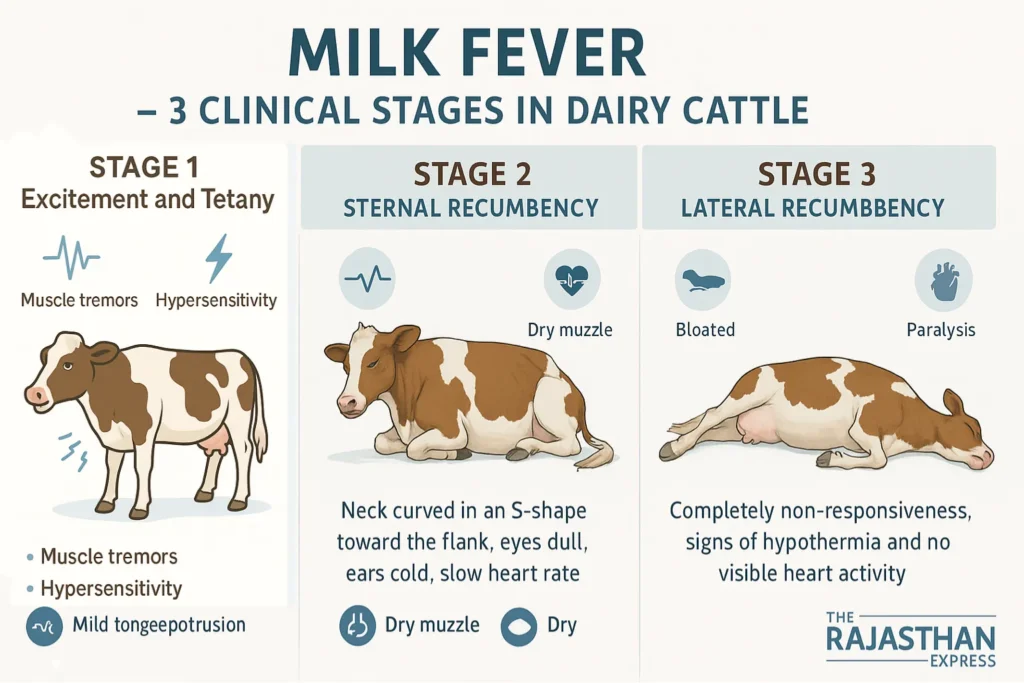
Major Metabolic Disease Examples: A Comprehensive List
| Major Metabolic Disease Examples: A Comprehensive List | |
| Disease Name | Brief Description |
|---|---|
| Milk Fever | Disease caused by calcium deficiency; usually occurs immediately after calving. |
| Downer Cow Syndrome | Damage to muscles/nerves due to prolonged lying down after milk fever. |
| Ketosis | Caused by energy deficiency; accumulation of ketones when fat breaks down. |
| Haemoglobinuria | Hemoglobin in urine due to RBC breakdown; mostly caused by phosphorus deficiency. |
| Hypomagnesemia Tetany / Lactation Tetany | Muscle cramps due to magnesium deficiency; common in milch animals. |
| Pregnancy Toxemia | Energy deficiency in late-stage pregnancy, leading to toxemia. |
| Neonatal Hypoglycemia | Risk of weakness and death in newborns due to glucose deficiency. |
| Most common metabolic disorders in cattle and buffaloes; monitoring mineral and energy balance is essential for prevention. | |
Body Condition Scoring (BCS): Critical Management Tool for Metabolic Prevention
Body Condition Score (BCS) is a standardized method used in animal husbandry and veterinary science to assess the reserve of fat (chubbiness) in an animal’s body. It is based on a visual and tangible (checking by touch) technique that helps determine energy balance status—whether the animal has an energy deficiency or surplus.
BCS Scaling Systems: 1-5 vs. 1-9 Point Scales
The agricultural industry primarily utilizes two scaling systems:
5-Point Scale (common for sheep, goats, horses):
- Simpler system with 0.5 increments
- Scores range from 1 (very thin) to 5 (obese)
- Ideal score: 3-3.5
9-Point Scale (preferred for dairy cattle):
- More detailed and sensitive to subtle changes
- Scores range from 1 (emaciated) to 9 (extremely obese)
- Ideal score: 5-7.
| BCS Comparison Chart for Cattle | ||
| BCS (1–5 Scale) | BCS (1–9 Scale) | Physical Condition Description |
|---|---|---|
| 1 | 1–2 | Very Lean (Emaciated): Bones are prominent, no fat detectable. |
| 2 | 3–4 | Lean: Bones easily visible and felt, minimal fat covering. |
| 3 | 5–7 | Ideal: Bones not visible but easily felt; balanced fat-muscle ratio. |
| 4 | 8 | Fat: Bones difficult to feel; thick fat layer present. |
| 5 | 9 | Obese: Bones impossible to feel; excessive fat deposits. |
| 🟢 BCS 3 (5–7) → Ideal for production & reproduction. 🔴 BCS 1–2 → Severe undernutrition. 🟣 BCS 4–5 (8–9) → Over-conditioned, risk of obesity-related issues. | ||
Practical BCS Assessment: Key Anatomical Points
Effective BCS evaluation requires inspection and palpation of specific anatomical regions:
- Backbone/Spine: Check for prominence and fat covering
- Ribs: Assess how easily they can be felt
- Hip Bones (Hooks and Pins): Evaluate fat coverage
- Tailhead: Examine fat deposition patterns
- Shoulder and Neck: Check for fat accumulation
- Hump (Zebu Cattle): Specific indicator for indigenous breeds
For Zebu cattle (like Sahiwal, Gir, Tharparkar), the hump serves as a crucial indicator of energy reserves. Assessment includes:
- Size and Fullness: How developed and filled the hump appears
- Texture and Firmness: Whether it feels firm (muscular) or soft (fatty)
The Critical Connection: BCS and Metabolic Disease Risk
Body Condition Scoring isn’t just about weight management—it’s a powerful predictive tool for metabolic health. Research shows that maintaining optimal BCS (5-7 on 9-point scale) significantly reduces the risk of metabolic disorders.
Calving-Specific BCS Recommendations
- Native Cows (Zebu): Highest metabolic risk during 3rd calving
- Exotic Cattle: Peak vulnerability during 5th calving
- Buffaloes: Maximum susceptibility during 4th calving
Breed-Specific Susceptibility to Metabolic Disorders
- Holstein-Friesian: Highest risk for Downer Cow Syndrome, Ketosis, PPH
- Jersey Cattle: Most susceptible to Milk Fever
- Sahiwal Cattle: Primary metabolic disorders found in native breeds
- Buffaloes: Generally more resistant than cattle breeds
Advanced Management Strategies: Preventing Metabolic Disorders
Nutritional Management Based on BCS
For Low BCS (≤4 on 9-point scale):
- Increase energy density of ration
- Incorporate high-quality concentrates
- Improve forage quality
- Consider mineral supplementation
For High BCS (≥8 on 9-point scale):
- Reduce energy density
- Increase dietary fiber (e.g., straw)
- Limit concentrate intake
- Implement controlled exercise
Monitoring and Intervention Protocols
- Regular BCS Checks: Every 2-3 weeks during transition periods
- Herds-Level Assessment: Track distribution across BCS categories
- DCAD (Dietary Cation-Anion Difference) Diet: Implement 3-4 weeks pre-calving
- Blood Parameter Monitoring: Calcium, phosphorus, magnesium levels
Diseases Covered in This Article
Explore the key metabolic diseases in cattle with quick links to each section:
- Milk Fever – Calcium deficiency immediately after calving
- Downer Cow Syndrome – Complications from prolonged lying after milk fever
- Ketosis In Cattle – Energy deficiency and ketone accumulation
- Postparturient Haemoglobinuria – Red blood cell destruction due to phosphorus deficiency
- Grass Tetany – Muscle cramps from magnesium deficiency
- Pregnancy Toxemia – Energy deficiency in late pregnancy
- Neonatal Hypoglycemia – Low blood glucose in newborn calves
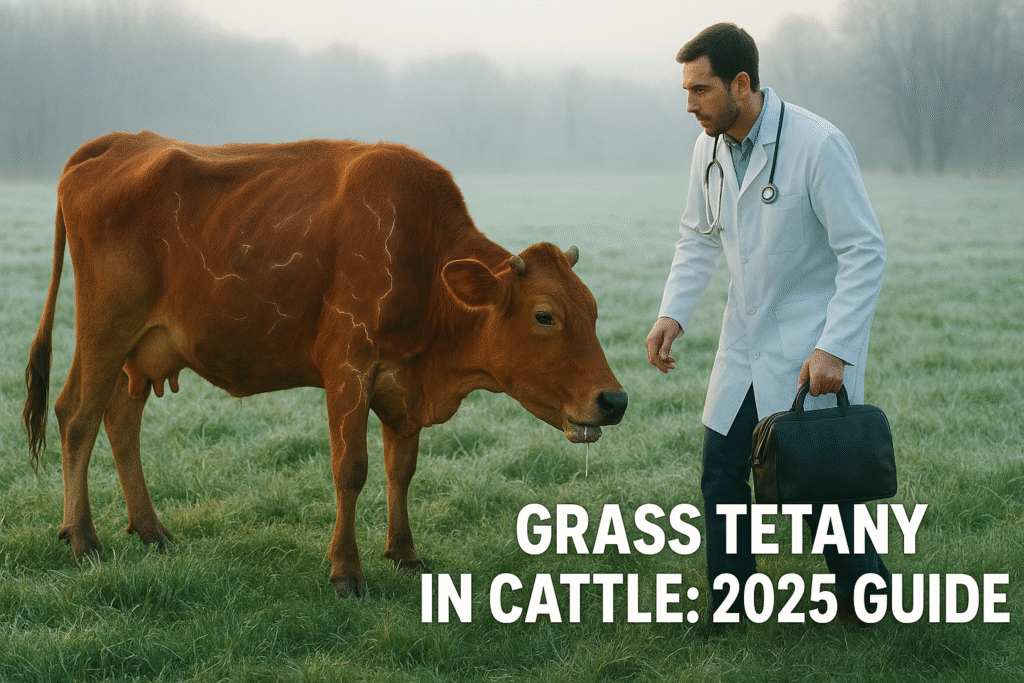
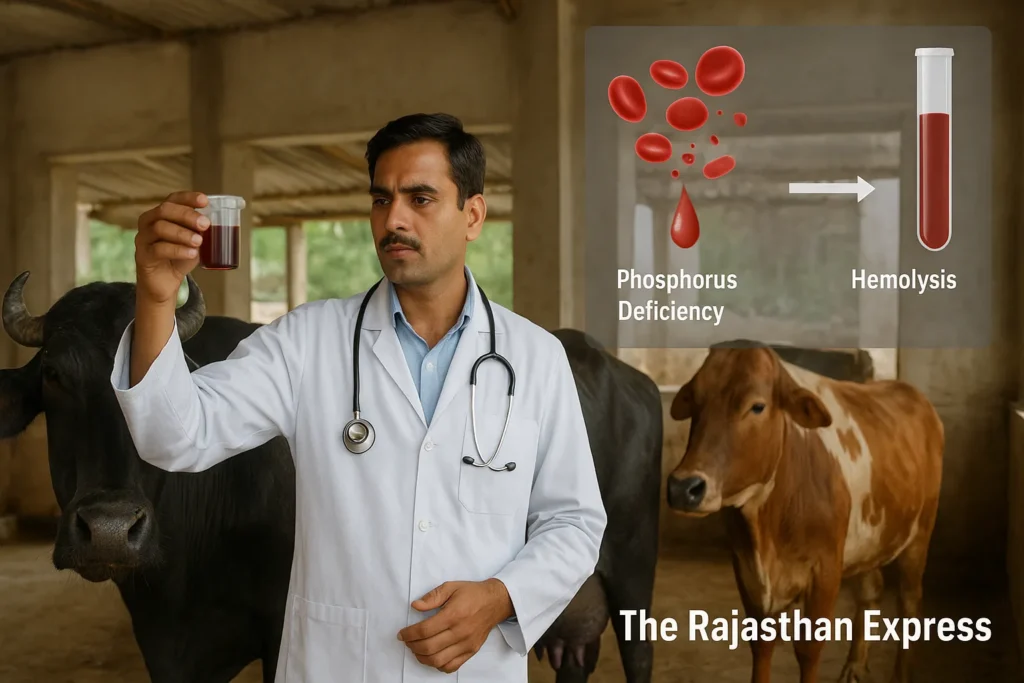
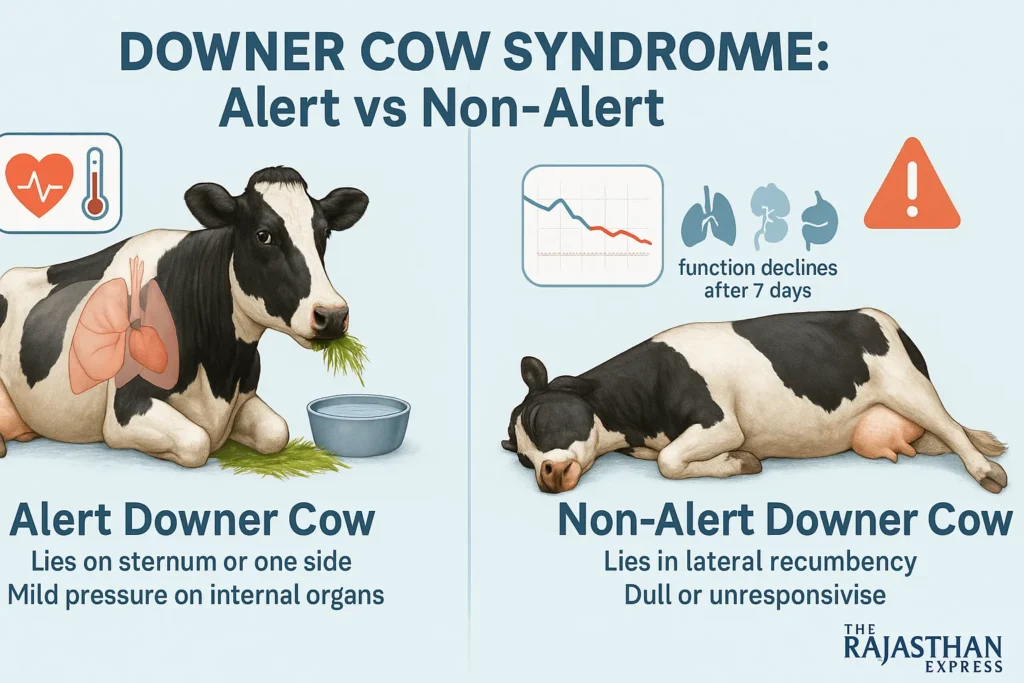
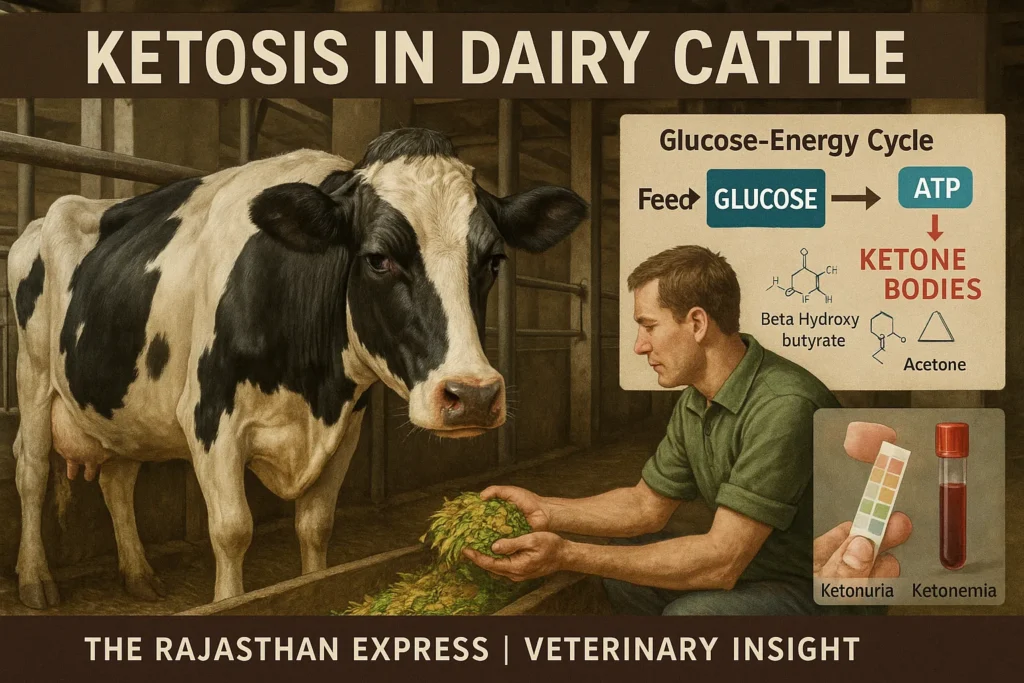
Comprehensive guide to metabolic diseases in dairy cattle. Learn about milk fever, ketosis, PPH, and body condition scoring with practical management strategies. Includes BCS chart and RAJUVAS research data.
THE RAJASTHAN EXPRESS
